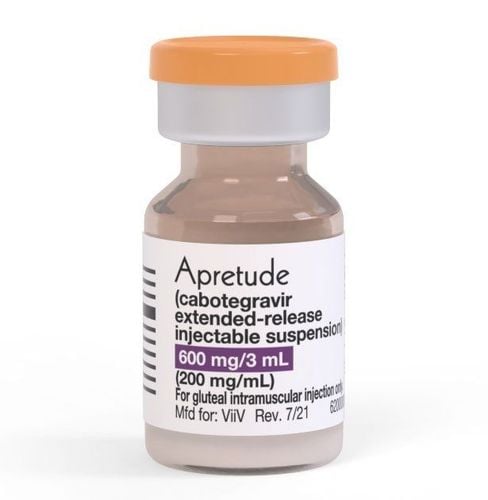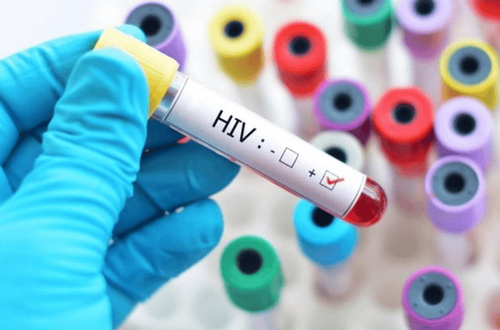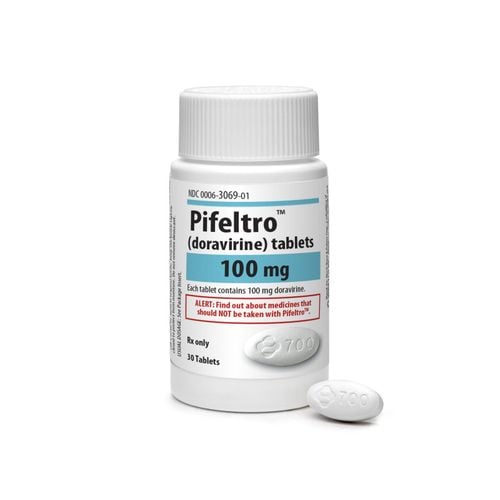This is an automatically translated article.
Human immunodeficiency syndrome virus infection destroys CD4+ lymphocytes, leading to decreased cell-mediated immunity, eventually causing the body to lose immunity and die from diseases opportunistic infections.
1. Origin of human immunodeficiency syndrome
The cause of human immunodeficiency syndrome is the Human immunodeficiency virus (HIV for short). The size of the HIV virus is extremely small, the tip of a needle can hold about 16,000 pieces. However, its effect on the human immune system is enormous, which will eventually lead to the inactivation of the immune system.
HIV virus can only grow and reproduce inside living cells. HIV is characterized by its reverse transcriptase and high affinity for immune system cells, including T helper lymphocytes (T-CD4), macrophages, monocytes, and Some cells have receptors with structures similar to T-CD4 such as nerve cells, skin and mucous membranes, systemic lymph nodes, etc. Therefore, when entering the body, HIV virus immediately adheres to the cell membrane. immune cells then start attacking inside.
First, they use reverse transcriptase to synthesize intermediate materials, and then use the existing structures of living cells as a vehicle to synthesize many other HIV viruses through cell division. This causes cells to become increasingly damaged and die, which will then release new viruses to reproduce. The new HIV virus enters other cells again, continuing the process of reproduction and destruction of the cell. Over time, the expression of weakened immune system becomes more and more obvious due to the destruction of CD4 T-cells, eventually leading to exhaustion, the immune system is no longer able to fight the invading pathogens, as well as the immune system. Acquired Immunodeficiency Syndrome (AIDS) is the terminal stage of the disease.

HIV là virut gây ra hội chứng suy giảm miễn dịch ở người
2. Transmission route of HIV
Transmission of the HIV virus requires contact with bodily fluids, especially blood, semen, vaginal secretions, breast milk, saliva and secretions from infected wounds, skin or mucous membranes. contain HIV virus or infected cells. HIV transmission is more common with high viral loads, even in the absence of symptoms. Transmission through saliva, cough or sneeze droplets, although possible, is very rare. Human immunodeficiency syndrome is not transmitted through casual contact at work, school, or home.
Situations in which HIV is commonly transmitted:
Sexual transmission: Direct transmission from genital secretions, rectal or oral fluids through sexual contact. Transmission through needles or related equipment: Infection is transmitted through sharing needles with blood or contact with equipment contaminated with HIV virus. Mother-to-child transmission: Childbirth or breastfeeding. Infection by blood transfusion or surgery related to organ transplantation.
3. Progression of immunodeficiency in HIV infection
During the first few weeks of primary infection, humoral and cellular immune responses occur:
Humoral immunity: Within a few weeks of exposure, the body produces antibodies against the HIV virus. However, antibodies cannot completely control infection because the forms of the HIV virus are constantly changing. Cellular immunity: Cell-mediated immunity plays a more important role in controlling high levels of initial HIV exposure (usually above 106 copies/mL). Meanwhile, mutations occurring in reverse transcriptase facilitate the creation of a new HIV virus that is resistant to immune system control as well as antiretroviral drugs. HIV plasma concentrations, expressed as HIV RNA copies/mL, are usually stable after about 6 months of infection, averaging between 30,000 and 100,000 copies/mL. The higher this value, the more severely the CD4 T-cell count drops, leading to a weakened immune system (when T-CD4 < 200/μL) and, as a result, AIDS.
The risk and severity of human immunodeficiency syndrome is determined by 2 factors:
T-CD4 count Risk of exposure to opportunistic pathogens The risk of opportunistic infections is particularly high when T-CD4 below the threshold of 200/μL for some infections and less than 50/μL for other diseases, specifically as follows:
T-CD4 count < 200/μL: Risk of Pneumocystis jirovecii pneumonia, inflammation toxoplasmosis, and cryptococcal meningococcal meningitis. T-CD4 count < 50/μL: Risk of cytomegalovirus (CMV) and Mycobacterium avium (MAC) Complex Infections On average, for every 3-fold increase in viral RNA in serum in patients If left untreated, the risk of developing AIDS or dying within the next 2 to 3 years increases by about 50%.
If left untreated, the risk of progressing to AIDS is about 1-2% per year for the first 2-3 years of infection and about 5-6% per year thereafter. Patients almost always progress to AIDS if left untreated.

Không thể chữa khỏi hoàn toàn hội chứng suy giảm miễn dịch ở người.
4. Principles of HIV/AIDS treatment
Patients should be diagnosed and started with treatment as soon as possible when there is a risk of exposure. The treatment of HIV disease is based on the following principles:
For HIV patients, treatment for opportunistic infections is done whenever there are signs, however treatment with antiretroviral (ARV) regimens only works. when there are enough indications. Antiretroviral treatment should be carried out in conjunction with medical, psychological and social care and support measures for people living with HIV. Any HIV treatment regimen must include at least 3 antiretroviral drugs (called Highly Active Antiretroviral Therapy – HAART) In all cases, the patient's adherence to treatment. is always an important factor determining the success of antiretroviral regimens. Antiretroviral drugs have an inhibitory effect on HIV replication and cannot completely cure human immunodeficiency syndrome. Therefore, the treatment process of the patient must continue continuously throughout life, and at the same time, it is necessary to apply preventive measures to avoid transmitting HIV virus to others. Even though patients on antiretroviral therapy have recovered their immunity, they still have to take preventive treatment for opportunistic infections. HIV patients without indications for antiretroviral therapy should continue to be monitored clinically and immunologically every 3 to 6 months to review disease progression and should be reminded of future ART indications. HIV surface proteins are constantly mutating, leading to a huge diversity of antigens, making it difficult to develop a vaccine against HIV. Currently, there is no effective vaccine for human immunodeficiency syndrome.
Please dial HOTLINE for more information or register for an appointment HERE. Download MyVinmec app to make appointments faster and to manage your bookings easily.













